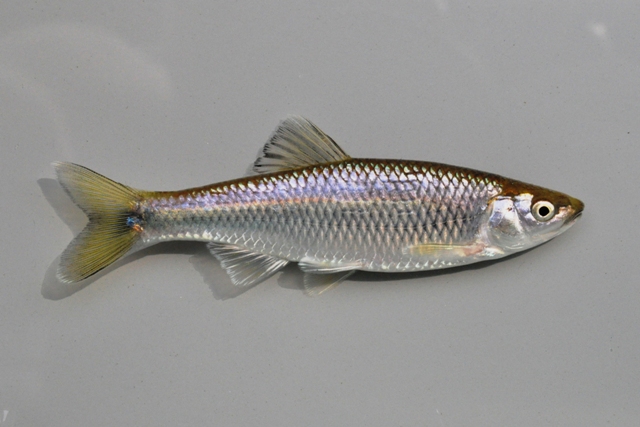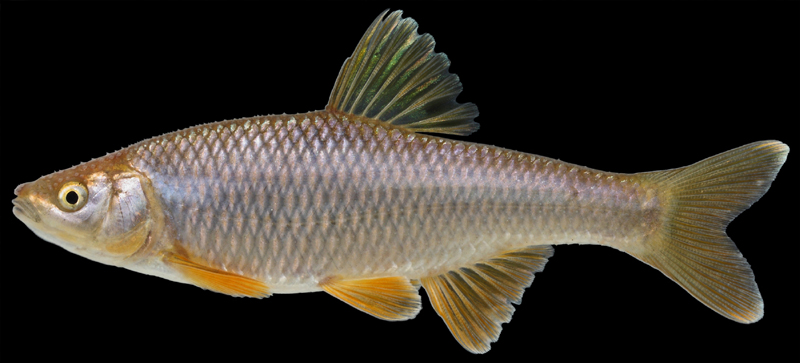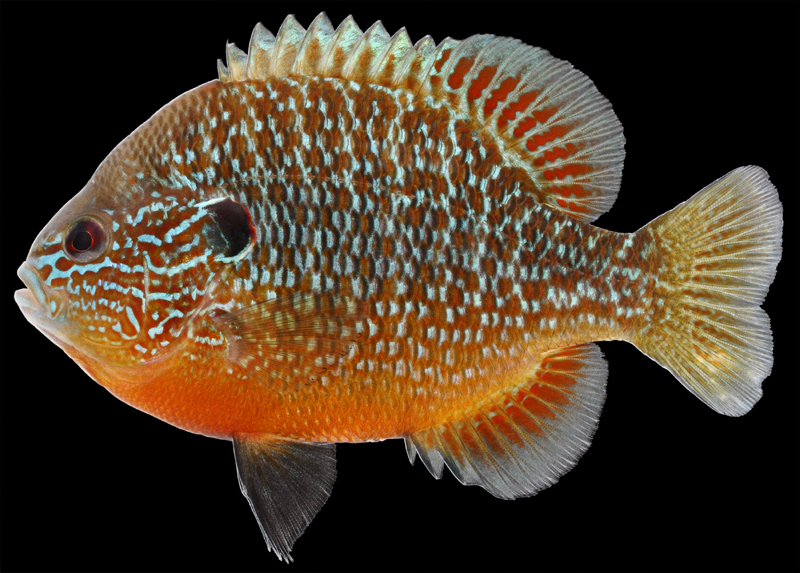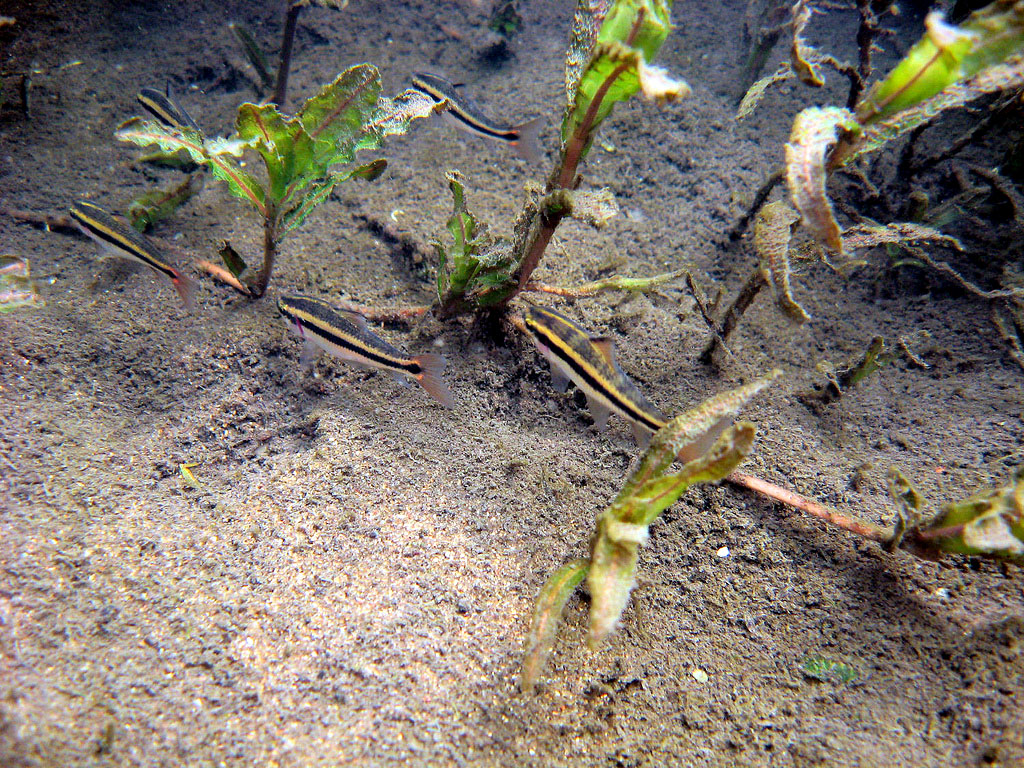We also found quite a few Pimephales notatus Bluntnose Minnow, Cyprinella spiloptera Spotfin Shiner, Lepomis humilis Orangespotted Sunfish along with many very large crayfish that I really should have taken photos of.
I've never sampled the Iroquois before and was a little surprised to see it low yet still quite turbid. With mud banks and bottom all around, it seemed like a really big prarie stream. Either way I will return for photos of the abundant P. vigilax and try and hunt down N. buchanani in the not too distant future.
We then drove to a nearby tiny stream to see several saucers near the bridge crossing with plenty of male Lepomis megalotis Longear Sunfish in their best colors. We showed great restraint in skipping them in search of other fishes downstream. The stream was small (about 6'-10' wide) and sluggish. The water was very cool and clear with abundant vegetation, sand/silt substrate that was surprisingly firm. We could have snorkeled this stream for sure. With much of the water at two feet deep and a maximum of about three feet, we managed to stay cool in the direct sun. It wasn't longe before we found several Notropis chalybaeus Ironcolor Shiners which were one of our targets that day. Males were in good color but lacked the tubercles I've seen in the past. It seems we were a bit early for them. Quite a few tiny (less than 1") Erimyzon sucetta Lake Chubsucker were netted and found to be particularly fragile at that size. No adult E. sucetta were found despite intense sampling. Lythrurus umbratilis Redfin Shiner and Esox americanus vermiculatus Grass Pickerel were not uncommon, a few Notropis stramineus Sand Shiners, Ambloplites rupestris Rock Bass, Fundulus dispar Starhead Topminnow were found along with a lone Catostomus commersoni White Sucker. Many of the Lepomis cyanellus Green Sunfish had ragged fins but at least were free of "black spot" so I've finally added an adult male to the photo collection. We continued downstream until we came across a half pipe spillway combination typically encountered in the the area and decided to see what we might find in the swift water below. A few particularly golden colored Etheostoma zonale Banded Darters were captured in the shallows and robust Cyprinella spiloptera were found in the sump of the spillway. All of the C. spiloptera males had peculiar orange fins and that makes the second location and sampling event this year where orange finned C. spiloptera were found. I've not been doing this as long as some folks but I don't recall seeing this coloration in the past. Anybody else have this experience? It was hard to head back upstream since we were having such a good time at this location but the thought of looking at the L. megalotis near the bridge was inspiration enough. Before climbing the spillway we did scrape up a few Luxilus chrysocephalus Striped Shiner from the pool behind the steel half pipe.
After photos we hunted around for access and ideal water without a whole lot of luck. We did stop at an artificial pond which I presume was a borrow pit for levees and saw a magnificent group of Lythrurus umbratilis engaged in courtship above a conspicuous slab of submerged cement. If we had not failed in finding Notropis texanus Weed Shiner, I'll bet we would have enjoyed the activity for a bit longer. Off to another stream system we went, and found what looked like perfect water but once we entered we found the water quite hot and the bottom so soft it was unpleasant to manuver. We did manage to find much of the same and added a single Aphredoderus sayanus Pirate Perch to the list. I was quite dismayed to see introduced Gambusia of monstrous sizes in these fragile streams. I have never encountered Gambusia in any Kankakee drainage until that day.
Blake and I were doggone tired and decide to call it quits for the day. I had a great time and Blake is a heck of a lot of fun to hang out with even though he poked me a bit about my age
All below photos came from the second location listed above and I hope Blake will post some of his. BTW Blake...I made a major mistake in my settings on the camera. I feel so stupid....I'll tell you about it next time we meet.
C. spiloptera (male)
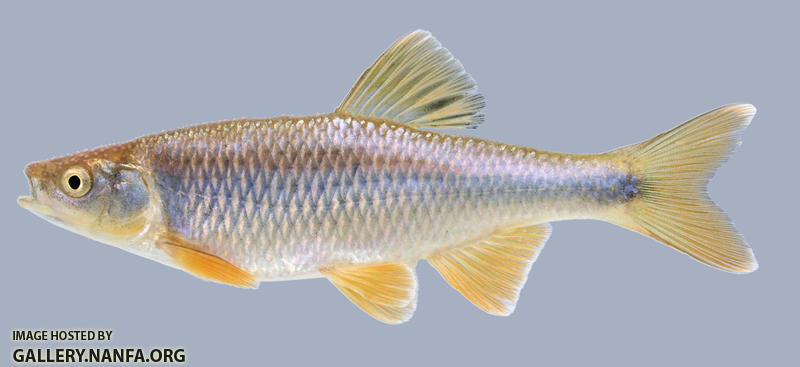
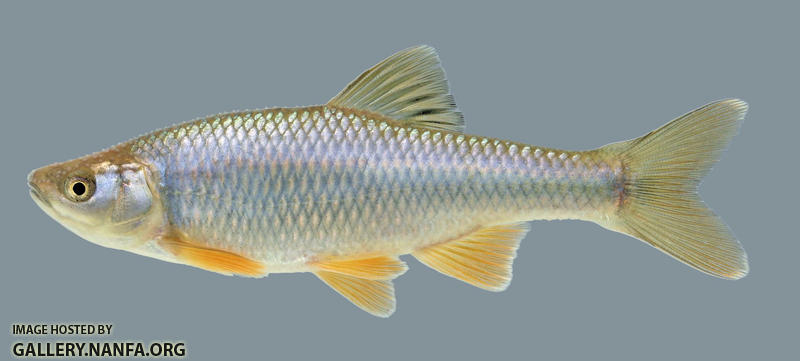
N. chalybaeus (male)
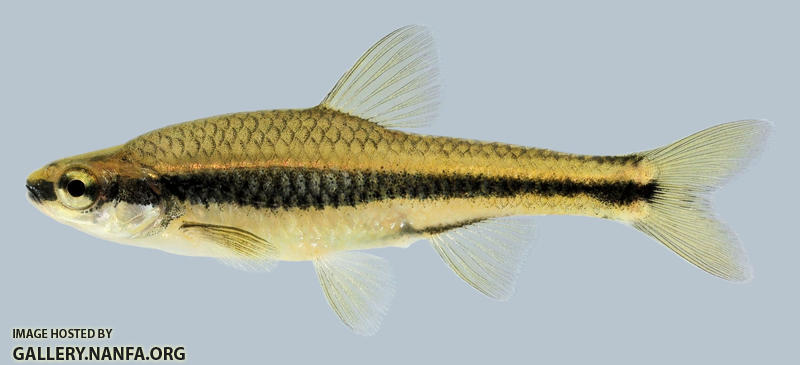
N. stramineus
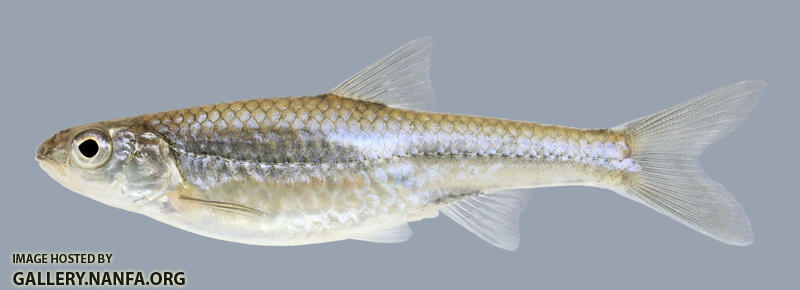
E. vermiculatus

L. megalotis
Note the wild differences in appearance from this tiny stream.

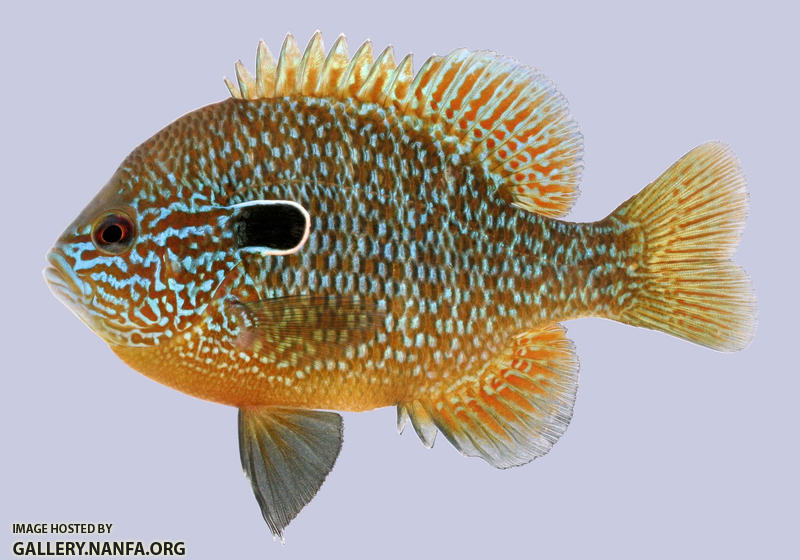
Males above, female below
L. cyanellus

F. dispar
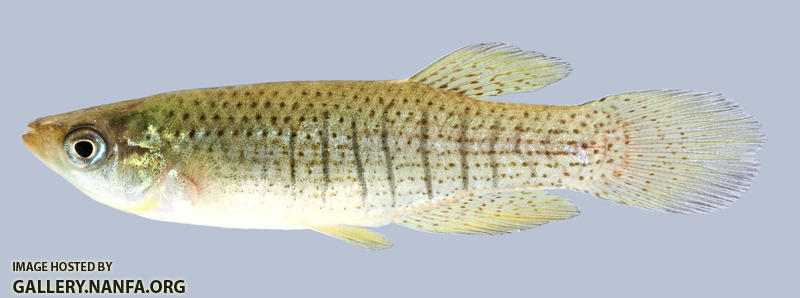
Male above, female below
http://gallery.nanfa...female 2000.jpg



